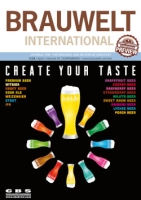For some considerable time, in beer production, the brewing industry has been making efforts to decrease specific water consumption, expressed in hl of fresh water per hl of sales beer. This conserves drinking water resources and contributes to reduction of operating costs for fresh water and effluent. This first part dealing with water management is followed by three papers which will deal with various processes for water treatment.
In maltings, breweries and beverage operations, water is the most important raw material and it is indispensable. As this resource is becoming increasingly scarcer and expensive worldwide, the section is making every effort to save water. Apart from lowering water consumption, recycling of production water is a further possibility for reducing water consumption, effluent and associated costs. The Weihenstephan Research Centre for Brewing and Food Quality has investigated processes capable of transforming pre-clarified effluent into drinking water.
Due to rising effluent charges and tougher environmental protection requirements, many brewery and food plants operate their own treatment plants. In order to lower cost-impacting COD values and to largely avoid production of sewage sludge, many operations go for anaerobic treatment. Biogas arising can be used on site, the plant pays for itself sooner. Taking Karlsberg Brauerei as an example, this paper describes a novel process control that identifies and heads off critical situations using fuzzy logic.
Results of a survey | German breweries have been surveyed in order to get an overview of current disposal routes used and the associated costs. This paper contains the results of a survey of 31 breweries.
After a construction period of almost one year, M. C. Wieninger Brewery in Teisendorf has commissioned an anaerobic waste water pre-treatment plant in September. Rising effluent costs, an anticipated financial contribution to the extension of the municipal treatment plant and, last but not least, environmental considerations which are accorded high priority at Wieninger led to a decision to build an in-house treatment plant. Biotim of Karlsruhe were responsible for the overall design and erection of the plant on a turn-key basis.
Significant savings can be achieved by combining anaerobic treatment of highly concentrated waste water partial streams with aerobic secondary treatment.
With environmental protection specifications becoming increasingly stringent, the brewing industry is also forced to lower costs for drinking water consumption and waste water discharge. Brewery effluents can be treated advantageously using biological technologies although intensive aerobic treatment involves high process expenditure for the continuous supply of oxygen required.
This article are describes case studies on how existing CO2 systems can be successfully upgraded .
Current issue
Most Read
BRAUWELT on tour
Current issue
Most Read
BRAUWELT on tour
-
Hopsteiner
Optimization of kettle hopping prior to dealcoholization
-
Hopsteiner
Excellent digital Service: the Hopsteiner Customer Portal
-
Hopsteiner
Variations in hop aroma depending on crop year
-
Hopsteiner
Playing with tradition: Hopsteiner Hopoils - Type Hoptanical
-
Hopsteiner
Crop and market update & hop crop 2023 estimate

